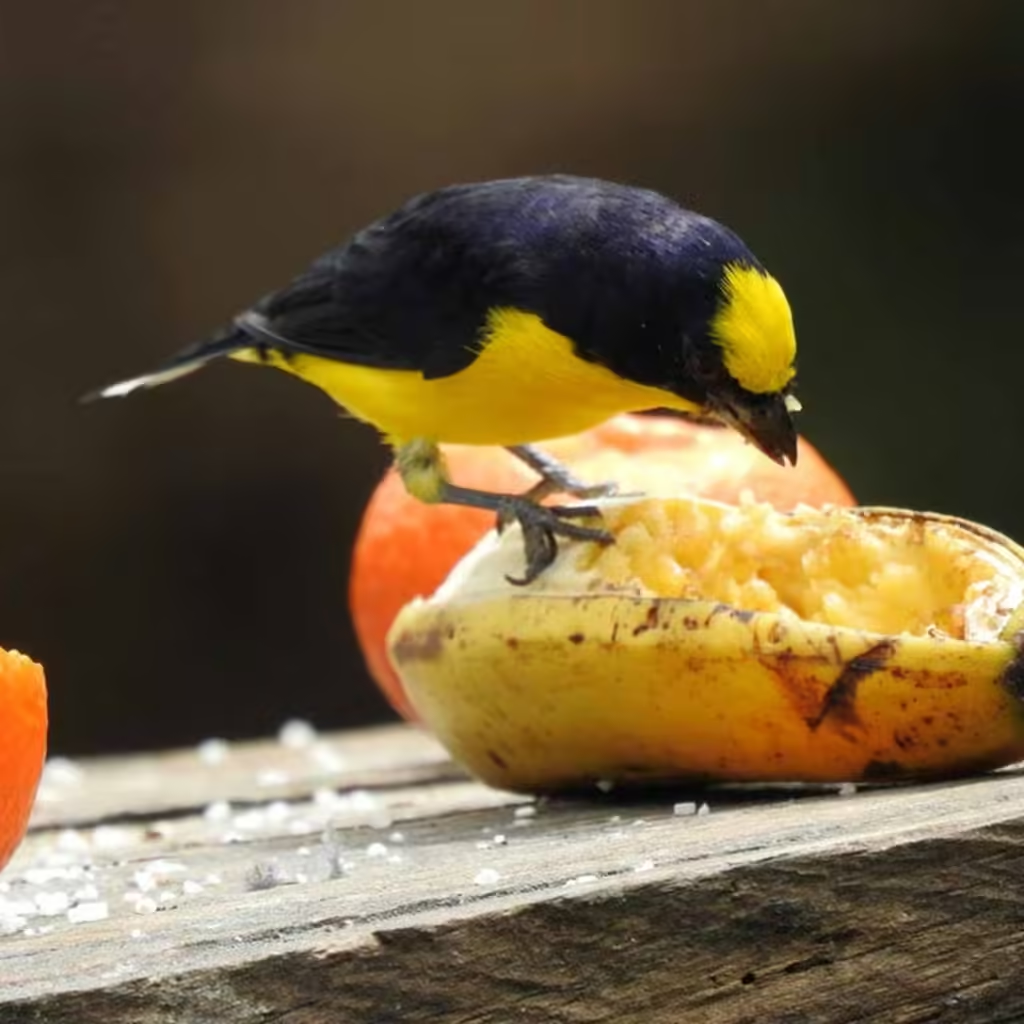
North Carolina’s diverse landscapes provide a haven for a wide variety of bird species. From the mountains to the coast, backyards across the state buzz with avian activity. Let’s explore 11 common backyard birds you’re likely to spot in North Carolina, their unique characteristics, and how to attract them to your outdoor space.
Also Reqd: Discovering the Common Blackbird
Northern Cardinal
The Northern Cardinal stands out with its:
– Bright red plumage (males) or olive-brown feathers (females)
– Distinctive crest and strong beak
– Year-round presence in North Carolina
– Preference for sunflower seeds at feeders

Carolina Chickadee
This small, energetic bird features:
– A black cap and bib with white cheeks
– Gray wings and back
– A fondness for suet and black oil sunflower seeds
– A cheerful “chick-a-dee-dee-dee” call
Tufted Titmouse
Recognize the Tufted Titmouse by its:
– Gray upper body and white underparts
– Small, pointed crest
– Black forehead
– Love for sunflower seeds and peanuts

American Robin
The American Robin is known for:
– Reddish-orange breast and dark gray back
– White eye ring
– Preference for lawns where they hunt for worms
– Melodious song, often heard at dawn
Blue Jay
The striking Blue Jay boasts:
– Bright blue feathers with white and black markings
– A prominent crest
– Bold and intelligent behavior
– Attraction to platform feeders with peanuts and sunflower seeds

Eastern Bluebird
Look for the Eastern Bluebird’s:
– Vivid blue upper parts and rusty breast (males)
– Softer blue-gray and orange coloration (females)
– Preference for open areas with scattered trees
– Attraction to mealworms and special bluebird feeders
American Goldfinch
The American Goldfinch charms with its:
– Bright yellow body and black wings (breeding males)
– Olive-yellow coloration (females and winter males)
– Fondness for nyjer seeds and sunflower hearts
– Undulating flight pattern

Mourning Dove
Identify Mourning Doves by their:
– Soft gray-brown plumage
– Long, tapered tails
– Peaceful cooing sound
– Preference for ground feeding on seeds
Red-bellied Woodpecker
The Red-bellied Woodpecker features:
– Black and white barred back
– Red cap extending to the nape (more extensive in males)
– Pale reddish wash on the belly
– Attraction to suet feeders and peanuts

House Finch
Spot House Finches by their:
– Streaked brown bodies
– Red head and breast in males (orange or yellow variations occur)
– Tendency to visit seed feeders in groups
– Cheerful warbling song
Carolina Wren
The Carolina Wren stands out with its:
– Rich brown upper parts and lighter underside
– Distinctive white eyebrow stripe
– Upward-tilted tail
– Loud, melodious “teakettle-teakettle” song

Attracting These Birds to Your Backyard
To invite these feathered friends to your outdoor space:
1. Offer a variety of food sources (seeds, suet, fruits)
2. Provide fresh water for drinking and bathing
3. Plant native trees and shrubs for shelter and nesting sites
4. Maintain a pesticide-free yard to ensure a healthy ecosystem
Conservation and Appreciation
While these birds are common, they face challenges:
1. Habitat loss due to urban development
2. Climate change affecting migration patterns
3. Collisions with windows and buildings
4. Outdoor cats posing a threat to bird populations

You can help by:
1. Participating in citizen science projects like the Great Backyard Bird Count
2. Creating bird-friendly spaces in your yard
3. Supporting local conservation efforts
4. Educating others about the importance of birds in our ecosystems
Also Read: Which Australian Bird is Black and White?
Conclusion
North Carolina’s backyard birds offer a colorful and melodious connection to nature right outside our doors. From the vibrant Northern Cardinal to the cheerful Carolina Wren, these 11 common species bring life and beauty to our outdoor spaces. By providing food, water, and habitat, we can enjoy their presence while contributing to their well-being.
Remember, each bird sighting is an opportunity to appreciate the diversity of wildlife in North Carolina. Whether you’re a seasoned birdwatcher or just starting to notice your feathered neighbors, take a moment to observe and enjoy these wonderful creatures. Your backyard might just become a favorite spot for both you and the birds!
Pingback: What Are the 7 Levels of Classification for a Bird?